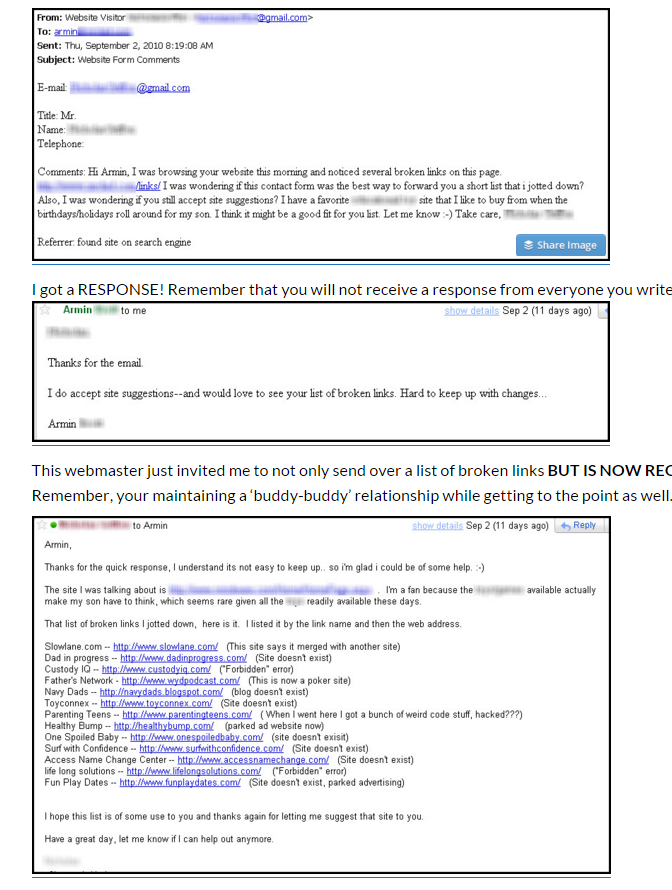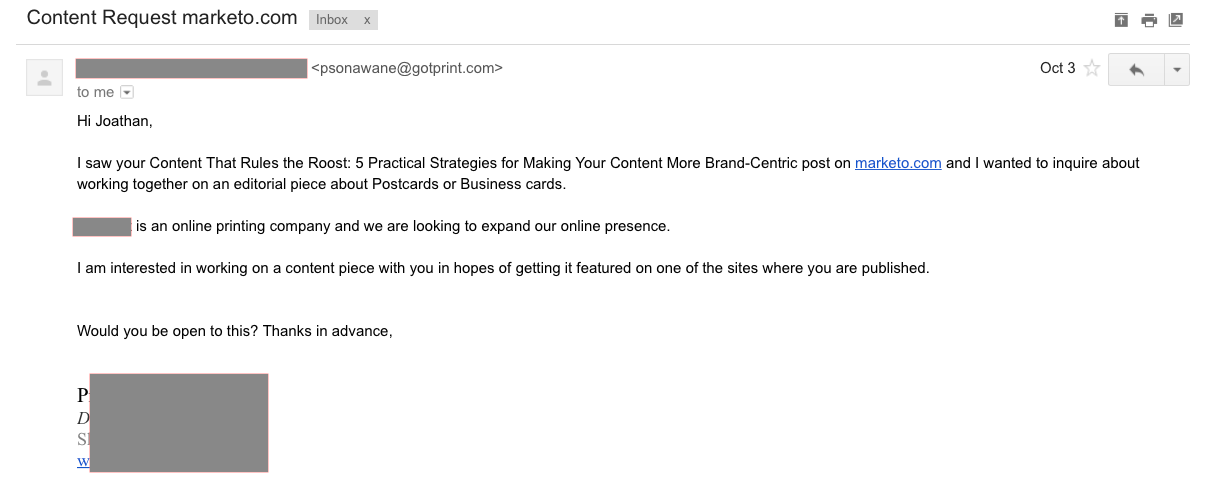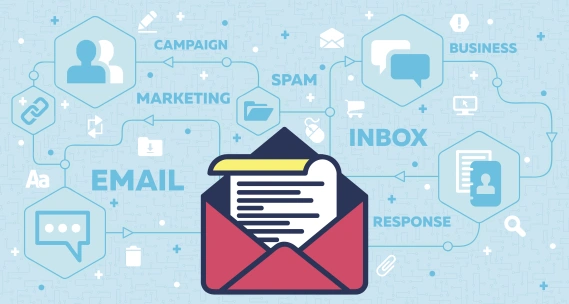Cold emailing: marketing’s greatest taboo?
Everyone’s afraid of being labeled a “spammer.” The typically low success rates get people asking the question “why even bother with cold emails?”
The truth, however, is that cold emails remain a valid and effective strategy to connect with influencers in your industry. Yes, they require time and effort to write well, but with the right formula and software like Keap, this outreach channel can bring you great success.
In this post, we’ll break down five keys to successful cold email marketing, why they’re effective, and how you can start incorporating them into your outreach campaigns.
1. Create a connection
To start with, no “cold email” you send should be an ice-cold email. You should always be able to establish some connection to your target reader despite never having contacted him or her before.The connection that you’ll probably find easiest to establish is a common industry.
For instance, if you’re sending a cold email to an influencer to get them to share a white paper you just published, you can draw on the fact that you’re both heavily involved in your company’s industry.Sometimes, however, you’ll find deeper, more personal connections. If you and the influencer have both contributed to the same blog in the past, mention that. Or perhaps you know someone in common; drop that mutual friend’s name, and the reader will already begin considering you an acquaintance rather than a stranger.
Once you established a connection, your email stands head and shoulders above the rest of the flood of generic, disconnected emails your recipient already gets.
2. Prove value
The very first thing your recipient should hear from you is a benefit for them.
After all, you’re trying to pique their interest and get them to keep reading and send you a reply, rather than hit backspace and delete your email. If you want a positive result, you need to give the recipient a solid reason to keep reading.
The best way to do that is to offer them some value that they just can’t pass up. That value could take the form of a demo of your product, free access to your service, or even just a general promise to lend assistance at a later date.

In the example above, the emailer offers to point out all the broken links on one of his recipient’s web pages. Essentially, he’s offering to tangibly help improve the recipient’s website—who can turn that kind of value down?
The basic idea is that you have to offer some kind value. Otherwise, there’s nothing to set your specific proposal apart from any of the other emailers who want to leech off of what your recipient has built up.
Check out Keap's Lifecycle Automation Assessment to determine where your business stands among the industry's top performers.
3. Establish credibility
Another crucial aspect of an effective cold email that gets responses is credibility, i.e. proving that you’re someone worth talking to.
If you take a look at the typical spammy kind of cold email, you’ll notice that the sender rarely takes any time to establish who they are and why they’re worth your time. Instead, they simply end with a common salutation, the sender’s name, and the company name.

In this example, the sender of the email fails to mention anything about himself, why he’s an expert in the industry, or why the recipient would want to collaborate with him on this project.
He doesn’t show that he has any unique insight or data to bring to the table. In short, he’s unmemorable and without any credibility.
You want to avoid that perception at all costs. Establish your authority and expertise in the industry.
You can do this in a few different ways, such as:
- Citing industry-leading publications you’ve been featured in
- Mentioning any relevant data or research your company has been involved in
- Stating the kind of exposure you have and the audience you have access to
Any of the above are effective ways to demonstrate to your recipient that you’re a credible, authoritative leader in your industry (provided that you do have publications, research, or a significant audience to fall back on).
If your company is still in its infancy, then establishing credibility can be a little more difficult, namely because you probably don’t have any yet. That’s when you need to write your email in such a way that communicates the value of you personally. Your passion for the industry and drive to become a notable figure in it needs to come across in the email loud and clear.
4. A little flattery goes a long way
You may have heard that attempting to flatter someone you’re trying to reach out to is a bad idea. After all, if they believe you’re insincerely complimenting them to get something out of them, there’s no way they’d give you a second thought.The key though is this everlasting proverb: “Everything in moderation.”
Just a little bit of flattery goes a long way. If you do it just right, you’ll nail your first impression and create a positive perception of yourself in the recipient’s mind. However, overdo it, and that email will be in the trash in a second.
Here are a few examples of what not to do:
- Example 1: “I came across your blog about dogs, and it’s the most AMAZING pet care blog I’ve ever read in my life!”
- Example 2: “I’ve heard a lot about you, and would be honored to receive a reply from someone as distinguished as yourself.”
- Example 3: “Your company has impressed me in many ways.”
Do you see what’s wrong here? Example 1 is just far too wishy-washy and over-enthusiastic. Plus, stay away from all caps anything in cold emails.
Example 2 sounds like something an obsequious servant would say; you’re putting the recipient on a pedestal and are setting yourself so far below that you’re doing yourself a disservice. Why should the recipient respond to someone so far beneath him/her?
Example 3 is again very generic and fails to mention anything specific. It looks like it could have been copied and pasted from another email, and that’s never helpful.
5. Call-to-action
Last but certainly not least, we have the call-to-action (CTA). This is the part where you delve into what you want the influencer to do for you. This is the main purpose of your email. Sure, you want to network and establish a connection with industry leaders, but what you really want is for them to benefit you and your company in some way.
The call-to-action is probably the most awkward part of the email to develop. You don’t want to sound too pushy, but at the same time, you also want to put forth your request in a confident manner.
The key is for you to make the process as simple and easy for the recipient as possible. For instance, if you want an influencer to share a link to your latest blog post on his/her social media, have sharing links ready to go in the email.
If you want the recipient to check out your new product and give you feedback, streamline the demo and ensure you’re available whenever he/she is.
Cold email with confidence
The next time you’re writing and sending out cold emails, approach it with confidence. Develop the mindset that what you’re doing will be successful, and it will be.
You can follow all of these strategies we’ve just covered and still fail to receive a response if you don’t email with confidence. People can sense self-assurance even from emails, and it’s one of the most attractive and positive qualities there is.
Start combining confidence with these five keys on how to cold email, and your response rate will start to skyrocket.
Ryan Gould is the Vice President of Strategy and Marketing Services at Elevation Marketing, a B2B marketing agency. Ryan helps medium and large brands improve sales and market share by developing integrated marketing experiences distinguished by research, storytelling, engagement, and conversion.





